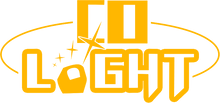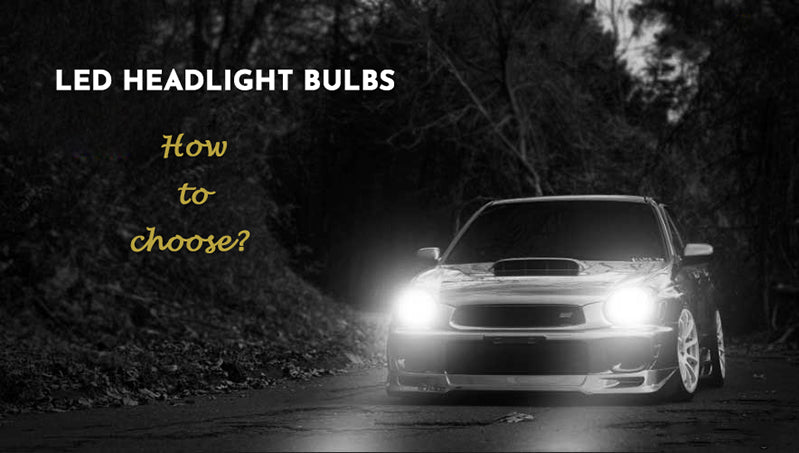In recent years, LED lights have been widely used in turn signal lights, brake lights, position lights, reversing lights, fog lights, license plate lights and other lamps, and have become the new favorite of the automotive trend.
With the popularity of LED lights, there are more and more LEDs with uneven quality on the market, so how to distinguish the quality? Before that, let's first understand the components of LED bulbs, so that we can understand what affects the life and price of LED bulbs.
There are four main components of the led headlight bulbs, lamp body, chip, circuit board and heat sink. Let's check out.
1. Lamp Body
The role of the lamp body is mainly to structure and heat dissipation. The difference between the lamp body is mainly reflected in the material, thickness and heat dissipation area. The quality of the material will affect the heat dissipation performance of the lamp. The better the heat dissipation, the better the stability and safety of the lamp, the smaller the light decay and the longer the service life. High quality led bulbs will be die-cast aluminum alloy 6063.
How to identify the heat dissipation of a lamp body:
a. The weight of the same volume of the lamp body, the heavier the weight, the greater the density, the better the heat dissipation;
b. The thickness of the lamp body, the thicker the thickness, the better the heat dissipation;
c. The number of heat sinks, the more, the better the heat dissipation;
d. Heat sink area and design, the larger the area, the better the heat dissipation, the same unique heat dissipation design, increase the air convection, the better the heat dissipation;
2. Chip
Different LED chips have their own benefits and drawbacks that result from how it is manufactured. The table below lists some of the key advantages and disadvantages of the different chips.

3. Circuit board
The aluminum substrate is a metal-based copper clad laminate with good heat dissipation function. Generally, the single panel is composed of a three-layer structure, which is a circuit layer (copper foil), an insulating layer and a metal base layer, and the aluminum substrate is a circuit design scheme of various electrical appliances. The bearing of the component is related to the stability of the lamp, and is related to the first conduction carrier of the heat dissipation of the LED chip. The main components on the board are: led chip, driver chip, capacitor, inductor, resistor, etc.
The quality of the aluminum substrate is mainly reflected in:
a. SMT welding process accuracy, cleanliness and quality; (poor must be aluminum substrate surface components are not neat, tidy, even stains)
b. The quality (brand) and quantity of electronic components of aluminum substrates;
c. the thickness and material of the aluminum substrate board, the thickness of the general aluminum substrate is about 1.2cm, the small factory is 0.6-0.8cm, the thermal conductivity of the good aluminum substrate is 1.2-1.5, and the difference of the aluminum substrate is about 0.8.
d. Whether the aluminum substrate and the lamp body are coated with a heat-dissipating glue to ensure sufficient contact between the aluminum substrate and the lamp body, and improve the heat dissipation of the circuit board.
4.Heat sink
There are three classifications of Led cooling fans:
Hydraulic fan: The hydraulic bearing fan is a kind of special spiral groove engraved in the bearing so that the lubricating oil is squeezed evenly when the bearing rotates, and buoyancy is formed between the shaft and the sleeve to support the axis to reduce Friction reduces noise and extends life.
Single Ball Fan: Single Ball Bearing (1 Ball+1 Sleeve Bearing) is an improvement on traditional oil-impregnated bearings. It uses a combination of sliding friction and rolling friction. It is actually a ball bearing with an oil-bearing to reduce the double ball bearing. The cost is that the rotor and the stator are lubricated with balls and are supplied with lubricating oil. It overcomes the short life of oil-bearing bearings and unstable operation, and the cost increase is extremely limited. The single ball bearing absorbs the advantages of oil-impregnated bearings and double-ball bearings, increasing the service life of the bearing to 40,000 hours. The disadvantage is that after adding the ball, the running noise is increased, but still less than the double ball bearing.
Double Ball Fan: Double Ball Bearing Fan Bearing (2 Ball Bearing) is a relatively high-grade bearing. It adopts the form of rolling friction and uses two ball bearings. There are several tiny steel balls around the shaft in the bearing when the fan or the shaft When turning, the steel ball rotates. Because they are all spheres, the friction is small and there is no problem with oil leakage. The advantage of the double ball bearing is that life is very long, about 6000-100,000 hours; the anti-aging performance is good, and it is suitable for the fan with higher rotation speed. The disadvantage of double ball bearings is that they are expensive to manufacture and have the highest noise at the same speed level. Double ball bearings and hydraulic bearings have better sealing, especially for double ball bearings. The double ball bearing is entirely embedded in the fan, and the rotating portion is not in direct contact with the outside. In a sealed environment, the working environment of the bearing is relatively stable.

